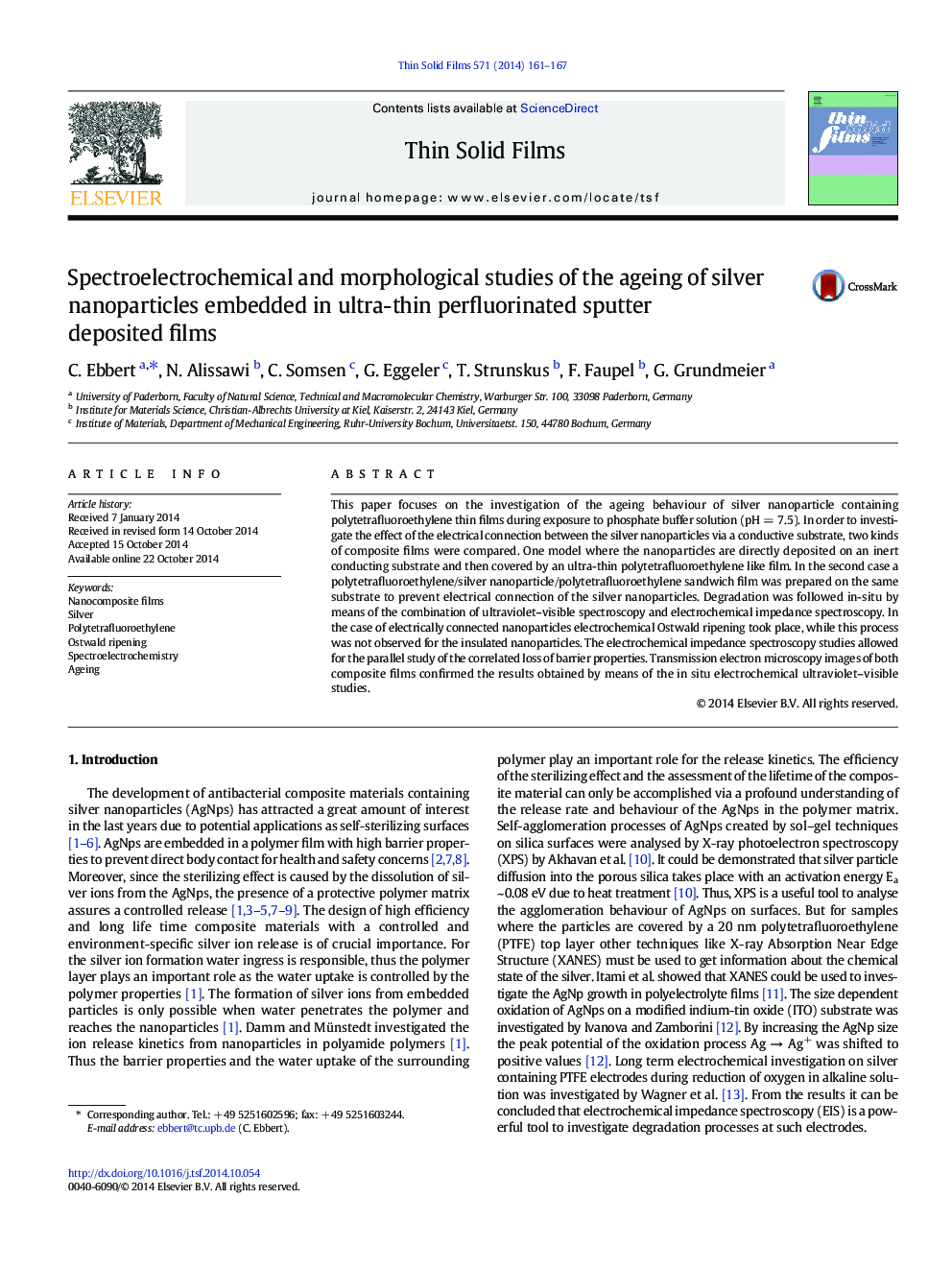| Article ID | Journal | Published Year | Pages | File Type |
|---|---|---|---|---|
| 1665091 | Thin Solid Films | 2014 | 7 Pages |
•Nanoparticle in polymer films could be analysed by a spectroelectrochemical approach.•Transmission electron microscopy analysis proved an Ostwald-ripening process.•Embedding of the silver nanoparticles inhibits the Ostwald-ripening process.
This paper focuses on the investigation of the ageing behaviour of silver nanoparticle containing polytetrafluoroethylene thin films during exposure to phosphate buffer solution (pH = 7.5). In order to investigate the effect of the electrical connection between the silver nanoparticles via a conductive substrate, two kinds of composite films were compared. One model where the nanoparticles are directly deposited on an inert conducting substrate and then covered by an ultra-thin polytetrafluoroethylene like film. In the second case a polytetrafluoroethylene/silver nanoparticle/polytetrafluoroethylene sandwich film was prepared on the same substrate to prevent electrical connection of the silver nanoparticles. Degradation was followed in-situ by means of the combination of ultraviolet–visible spectroscopy and electrochemical impedance spectroscopy. In the case of electrically connected nanoparticles electrochemical Ostwald ripening took place, while this process was not observed for the insulated nanoparticles. The electrochemical impedance spectroscopy studies allowed for the parallel study of the correlated loss of barrier properties. Transmission electron microscopy images of both composite films confirmed the results obtained by means of the in situ electrochemical ultraviolet–visible studies.
